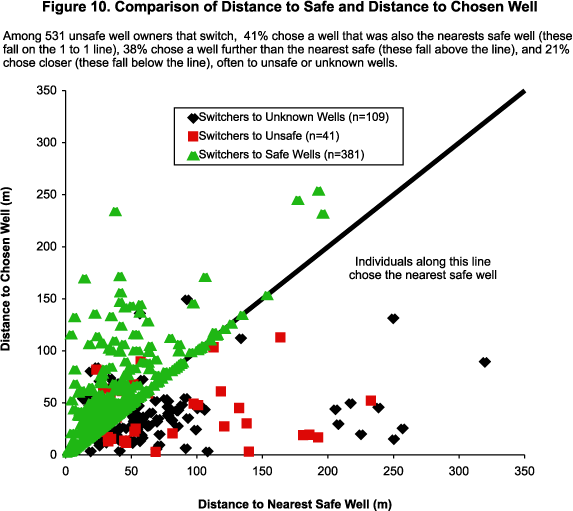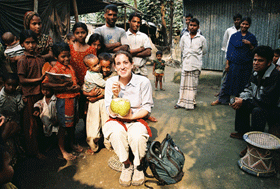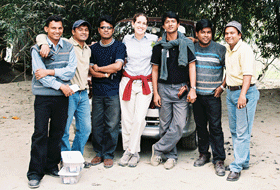
Two years after the Bangladesh Arsenic Mitigation and Water Supply Project (BAMWSP) tested and labeled private tubewells for arsenic concentration (painted green if at or below the country standard of 50 ug/l or red if above), surveys of some 4,000 wells show that less than one-third of unsafe well owners in a 100-km2 area of Araihazar have switched to an alternate well. In contrast, previous surveys of some 6,000 wells show that two-thirds of unsafe well owners had switched following testing and labeling by BAMWSP and Columbia University. This 25-km2 area also received 50 low arsenic community wells prior to surveys and has been studied and surveyed by Columbia University earth, health, and social scientists since 2000. As the primary difference between mitigation efforts in these two socially and geographically similar locations, additional academic presence (with safe well installations and regular reminders of arsenic hazards) seems to have positively influenced switching behavior. Yet when switching behavior is examined on a village level, other factors clearly play a role in the success or failure of testing and labeling programs. Easily measured physical factors, such as the village proportion of unsafe wells or the distance to the nearest safe well, are boundary conditions that limit or encourage switching behavior. Yet less predictable factors, like the presence of an “arsenic activist” or social barriers to switching to the nearest safe well, can help overcome physical limitations or work against favorable ones. A comparison of distance to chosen well and the nearest safe well at the household level provides evidence that these social barriers exist and play a significant role in preventing a switch to the closest safe well.
 |
 |
 |
Amy Schoenfeld living and working in Bangeldesh during the data collection for her research project. |
Amy and some of the data collection group. |
Go to Science Research Projects.
Go to Learning Objectives of Research Project.
Return to E&ESJ home page.
Last updated: 19 January 2006, MKT.